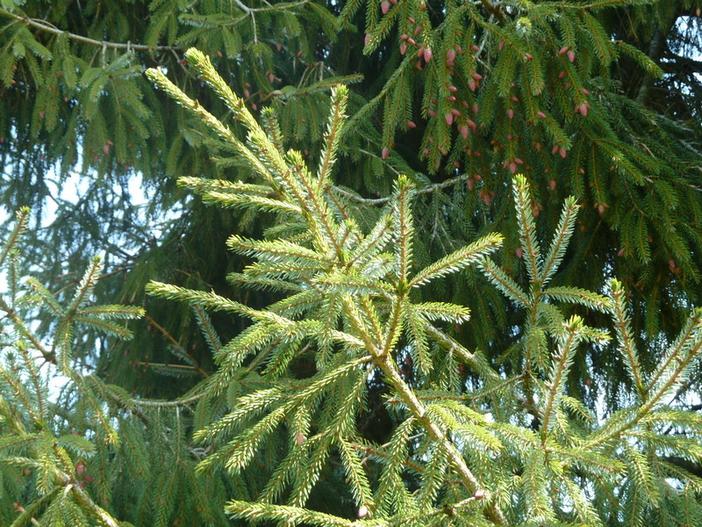Lijiang Spruce
(Picea likiangensis)
Lijiang Spruce (Picea likiangensis)
/
/

Wendy Cutler
CC BY 2.0
Image By:
Wendy Cutler
Recorded By:
Copyright:
CC BY 2.0
Copyright Notice:
Photo by: Wendy Cutler | License Type: CC BY 2.0 | License URL: https://creativecommons.org/licenses/by/2.0/ | Uploader: wlcutler | Publisher: Flickr

























Estimated Native Range
Summary
Picea likiangensis, commonly known as Lijiang spruce, is an evergreen tree native to the high-altitude coniferous forests of the eastern Himalayas, including Bhutan and southwestern China. It is typically found at elevations of 2,000 to 4,300 meters, where it contributes to the region’s complex montane forest ecosystems. Lijiang spruce can reach up to 164 feet (50 meters) in height, with a conical form that becomes more irregular with age. The species is characterized by its dark green needles and cylindrical cones that may be up to 10 centimeters long.
The Lijiang spruce is valued for its timber and is used in local construction and paper production. In cultivation, it is appreciated for its tall, stately appearance and is sometimes planted in large gardens and parks, particularly in areas that mimic its native cool, moist climate. It requires well-drained, acidic soil and can tolerate cold temperatures. However, it is sensitive to drought and requires consistent moisture. Due to its vulnerability in the wild, cultivation can serve as a conservation strategy.CC BY-SA 4.0
The Lijiang spruce is valued for its timber and is used in local construction and paper production. In cultivation, it is appreciated for its tall, stately appearance and is sometimes planted in large gardens and parks, particularly in areas that mimic its native cool, moist climate. It requires well-drained, acidic soil and can tolerate cold temperatures. However, it is sensitive to drought and requires consistent moisture. Due to its vulnerability in the wild, cultivation can serve as a conservation strategy.CC BY-SA 4.0
Plant Description
- Plant Type: Tree
- Height: 60-90 feet
- Width: 25-40 feet
- Growth Rate: Moderate, Slow
- Flower Color: N/A
- Flowering Season: Non-Flowering
- Leaf Retention: Evergreen
Growth Requirements
- Sun: Full Sun, Part Shade
- Water: Medium
- Drainage: Medium
Common Uses
Low Maintenance
Natural Habitat
High-altitude coniferous forests of the eastern Himalayas, including Bhutan and southwestern China
Other Names
Common Names: Likiang Spruce
Scientific Names: Picea likiangensis , Picea balfouriana f. bicolor
GBIF Accepted Name: